Septic tank tires: self-made do-it-yourself technology
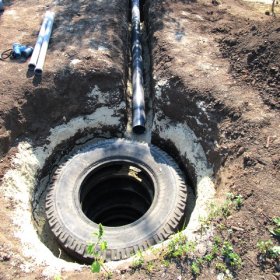
A well-maintained house is, first of all, housing, where sewage is carried out. Unfortunately, not everywhere there are conditions for arranging communications. Often you have to resort to unusual ways of creating it, for example, to arrange a septic tank from tires, a simple and practical option that allows you to secure your home with a sewage system without any special expenses. However, it must be understood that such a structure is not intended for large volumes of wastewater, therefore it is chosen if a small number of people will use the sewage system.
Septic tank: the difference from the cesspool and the principle of operation
Many mentally equate the cesspool and septic tank, confident that since they have to be pumped out, then there is no difference. However, it is not. The difference is huge. A cesspool is an ordinary tank that is emptied as it is filled. Whereas a septic tank equipped with tires is a system that carries out biological wastewater treatment. He also sometimes needs pumping, but much less often than a cesspool.
The system consists of two sealed tanks interconnected. Waste water flows directly into the first tank from a sewer pipe. This site can be considered a primary treatment zone in which large particles of contaminants settle. Here begins the work of bacteria that clean the drains.
Sewage settles to the bottom, only the initially purified water reaches the overflow zone, which is located in the upper part, and enters the second chamber. It is slightly larger than the first. Here, the active work of bacteria continues, it only happens much more intensively.
Basic rules for the arrangement of construction
When choosing a place for a septic tank, the following should be considered:
- Between the upper groundwater level and the bottom of the structure should be at least a meter of soil.
- The distance from the drinking water intake to the septic tank is at least 50 m for sandy soils and 20 meters for clay soils.
- There should be free access for the cesspool machine.
- The distance from the house to the septic tank is at least 5 m.
- If possible, the structure is arranged so that its level is below the water intake, that is, towards the natural slope of the landscape.
A sewer pipe is necessarily brought to the septic tank. So that it does not suffer in the cold, it is best to lay it below the level of freezing soil. You can equip a special protective box in which it will be reliably protected from mechanical damage and will be able to "play" from temperature differences without consequences.
System installation features
Choosing a place for construction, you need to determine its volume. It is generally believed that it should be equal to at least three times the size of daily wastewater.Based on this, the approximate depth of the structure is calculated. Most often, it is equal to the height of 5-7 tires.
Considering that tires can be very different, both from cars and from powerful agricultural machinery, the volume of construction varies.
The work is carried out in stages:
- Markup. The tire intended for the first well is taken and laid on the ground. The sizes of the future well are marked on it. At a certain distance, a tire intended for the second container is stacked. It can be larger in diameter, since the volume of the second well should be larger. Marking is also carried out on it. Then dig a hole of the right size for both tanks.
- Arrangement of the bottom of the wells. It must not allow sewage to enter the soil. The surface can be concreted or equipped with the so-called "clay plug", a width of 20-25 cm.
- Tire preparation. In each of the tires with the help of a jigsaw, the upper part is carefully removed. After installation, such parts form a well with more even walls, which will prevent sewage from lingering on them.
- Mounting tires. Tires stack one on top of the other. At the same time, for the strength of the connection, they can be punctured in pairs and connected with wire. Each joint and seam are carefully lubricated with sealant. An adapter pipe must be inserted between the wells at a height of about 2/3 of the bottom, under which a hole is cut. In the upper part of the first well, a hole is also cut out for a sewer pipe stretched from the house.
- Laying pipes between the wells. For these purposes, a conventional plastic sewer pipe is suitable. A structure that feeds drains from the house is also inserted and fixed inside the hole.
- Backfill. For these purposes, you can use sand or soil that was removed when digging a hole. The operation is carried out carefully so as not to damage the integrity of the structure.
- The arrangement of the cover. The wells must be covered with lids; it is desirable that the material from which they are made is not rotted.
The design is ready for use.
The main advantage of this option is the low cost and ease of installation. However, there are disadvantages:
- A small amount of wastewater that it can process.
- A rather high risk of soil contamination with sewage, since it is difficult to achieve complete tightness from tires.
Also, when planning to equip such a septic tank from tires with your own hands, you need to understand that the structure belongs to the class of storage septic tanks, therefore it requires pumping out the accumulated liquid.
Some owners of suburban buildings are attempting to equip a full-fledged three-chamber septic tank of tires. However, it is worth noting that although technically it is quite possible, tires are not the best material for such structures. It is unlikely that it will be possible to ensure the tightness necessary for the effective operation of the septic tank. In addition, interconnected tires as a result of seasonal temperature variations in the soil can gradually move, which further violates the tightness of each chamber. As a septic tank, the design of tires serves very well, allowing you to enjoy the benefits of civilization even away from the city.
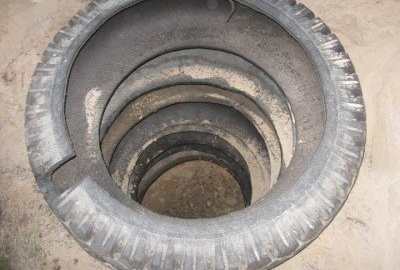
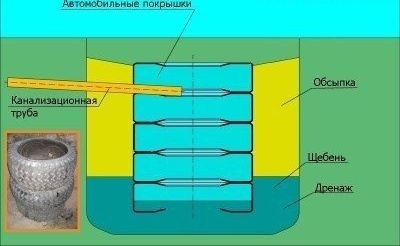
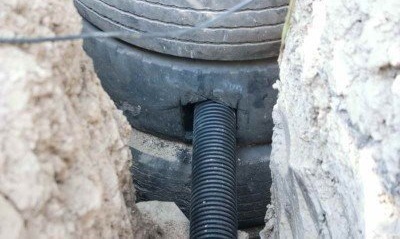
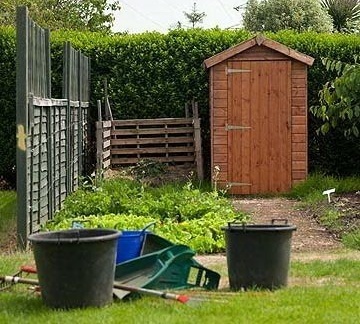
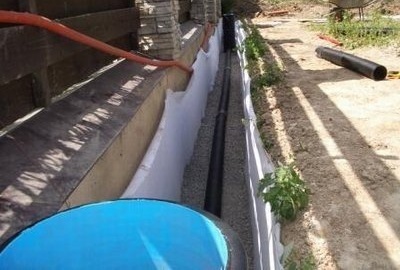
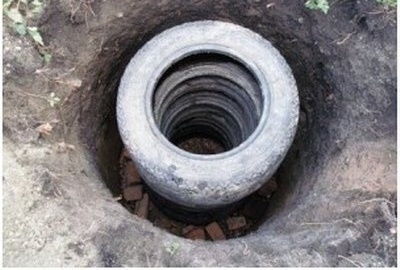
1 comment